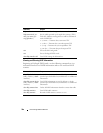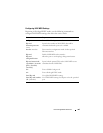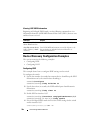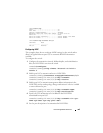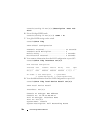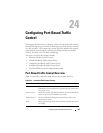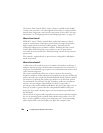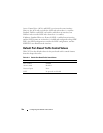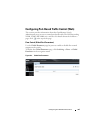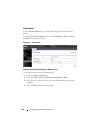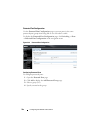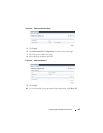
788 Configuring Port-Based Traffic Control
The Priority Flow Control (PFC) feature, which is available on the N4000
switches only, provides a way to distinguish which traffic on a physical link is
paused when congestion occurs based on the priority of the traffic. For more
information, see "Configuring Data Center Bridging Features" on page 983.
What is Flow Control?
IEEE 802.3 Annex 31B flow control allows nodes that transmit at slower
speeds to communicate with higher speed switches by requesting that the
higher speed switch refrain from sending packets. Transmissions are
temporarily halted to prevent buffer overflows. Enabling the flow control
feature allows Dell Networking series switches to process pause frames
received from connected devices. Dell Networking switches do not transmit
pause frames.
Flow control is supported only on ports that are configured for full-duplex
mode of operation.
What is Storm Control?
A LAN storm is the result of an excessive number of broadcast, multicast, or
unknown unicast messages simultaneously transmitted across a network by a
single port. Forwarded message responses can overload network resources and
cause network congestion.
The storm control feature allows the switch to measure the incoming
broadcast, multicast, and/or unknown unicast packet rate per port and discard
packets when the rate exceeds the defined threshold. Storm control is enabled
per interface, by defining the packet type and the rate at which the packets
are transmitted. For each type of traffic (broadcast, multicast, or unknown
unicast) you can configure a threshold level, which is expressed as a
percentage of the total available bandwidth on the port. If the ingress rate of
that type of packet is greater than the configured threshold level the port
drops the excess traffic until the ingress rate for the packet type falls below
the threshold.
The actual rate of ingress traffic required to activate storm-control is based on
the size of incoming packets and the hard-coded average packet size of 512
bytes - used to calculate a packet-per-second (pps) rate - as the forwarding-
plane requires PPS versus an absolute rate Kbps. For example, if the



